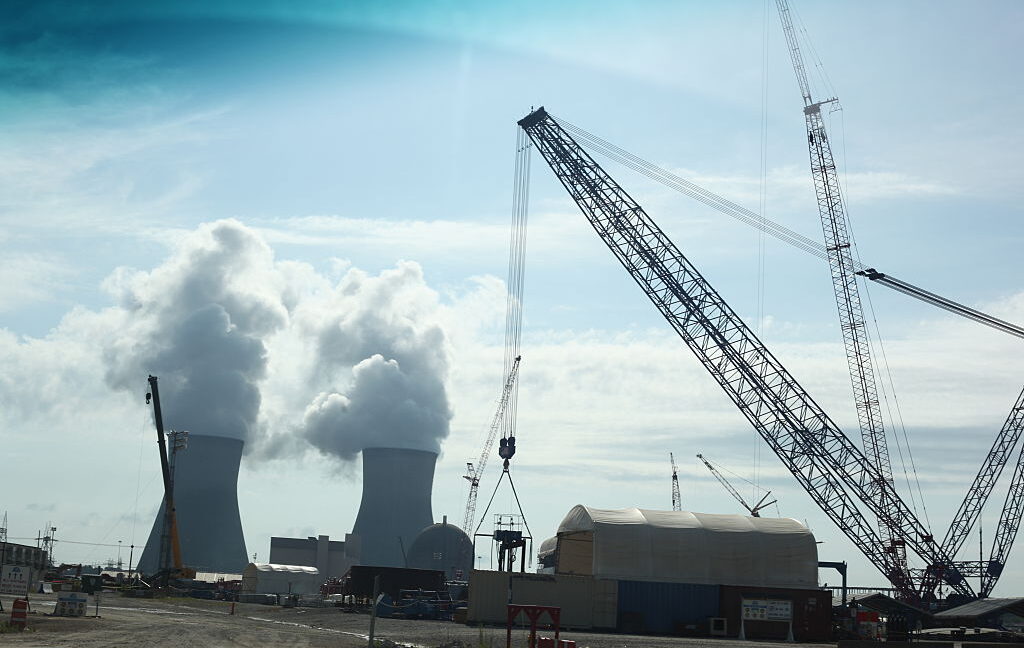Science
Westinghouse Targets $80 Billion in New Nuclear Reactor Projects

Westinghouse Electric Company has announced a significant agreement with the Trump administration, aimed at advancing the construction of nuclear reactors in the United States, projected to reach a staggering $80 billion. The deal, revealed on Tuesday, is part of a broader initiative involving collaboration between GE Vernova and Hitachi to expand nuclear capabilities across the country.
Details regarding this ambitious plan remain scarce. The negotiations reportedly occurred during President Trump’s visit to Japan, where it was indicated that Japan and several Japanese corporations could invest “up to” $332 billion into energy infrastructure projects, which include the involvement of Westinghouse, GE Vernova, and Hitachi.
Potential Reactor Developments
The anticipated projects encompass plans for both large AP1000 reactors and smaller modular reactors, although the exact allocation of funds for nuclear reactor construction has not been disclosed. The announcement suggested that numerous companies would benefit from the overall investment, focusing on basic grid infrastructure and energy initiatives.
Despite Westinghouse’s optimistic projection of being engaged in the construction of “at least $80 billion of new reactors,” a significant challenge lies ahead. Currently, there are no nuclear reactors under construction in the United States, and the last two completed projects led to severe financial difficulties for Westinghouse, which is now co-owned by Cameco, a nuclear fuel supplier, and Brookfield Asset Management.
The Financial Times reported insights from one of Westinghouse’s owners, who speculated that the $80 billion investment might be sufficient for building eight reactors. However, if the costs mirror those of the previously constructed AP1000 reactors, only five could potentially be financed.
Challenges Ahead for Nuclear Expansion
The viability of this deal is further complicated by the profitability of nuclear power in the United States. According to the Department of Energy, nuclear energy is currently the second-most expensive source of electricity, trailing only offshore wind energy, which has seen a decline in costs in recent years.
Moreover, the approval process for the designs of small modular reactors, which are central to this expansion, has yet to be completed by the Nuclear Regulatory Commission. As such, achieving a successful rollout of the proposed reactors will require overcoming both financial and regulatory hurdles.
As of now, the Department of Energy has not provided additional information regarding the deal, and there is no available commentary from GE Vernova or Hitachi about their roles in this collaboration. The absence of details raises questions about the timeline and feasibility of these ambitious nuclear projects, leaving stakeholders and industry observers eager for more clarity as developments unfold.
-

 Science3 months ago
Science3 months agoToyoake City Proposes Daily Two-Hour Smartphone Use Limit
-

 Top Stories3 months ago
Top Stories3 months agoPedestrian Fatally Injured in Esquimalt Collision on August 14
-

 Health3 months ago
Health3 months agoB.C. Review Reveals Urgent Need for Rare-Disease Drug Reforms
-

 Technology3 months ago
Technology3 months agoDark Adventure Game “Bye Sweet Carole” Set for October Release
-

 World3 months ago
World3 months agoJimmy Lai’s Defense Challenges Charges Under National Security Law
-

 Lifestyle3 months ago
Lifestyle3 months agoVictoria’s Pop-Up Shop Shines Light on B.C.’s Wolf Cull
-

 Technology3 months ago
Technology3 months agoKonami Revives Iconic Metal Gear Solid Delta Ahead of Release
-

 Technology3 months ago
Technology3 months agoApple Expands Self-Service Repair Program to Canada
-

 Technology3 months ago
Technology3 months agoSnapmaker U1 Color 3D Printer Redefines Speed and Sustainability
-

 Technology3 months ago
Technology3 months agoAION Folding Knife: Redefining EDC Design with Premium Materials
-

 Business3 months ago
Business3 months agoGordon Murray Automotive Unveils S1 LM and Le Mans GTR at Monterey
-

 Technology3 months ago
Technology3 months agoSolve Today’s Wordle Challenge: Hints and Answer for August 19









